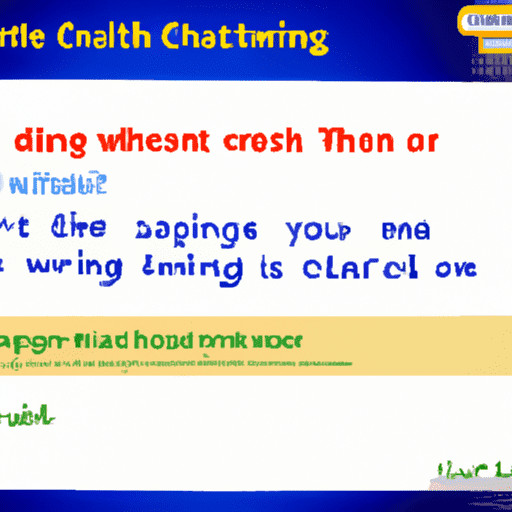## How to Write the Perfect AI Prompt: A Guide to Mastering ChatGPT
Have you ever tried using an AI model like ChatGPT only to be disappointed by the output? It may seem like the model is not living up to the hype, but the truth is, the quality of the output is heavily influenced by the input. To truly master AI, you need to know how to write a good prompt.
I sat down with HubSpot’s SEO team to uncover the key elements of a good prompt and gather some helpful prompt writing tips and techniques. In this article, we’ll explore the art of crafting the perfect AI prompt and how it can unlock the full potential of AI models like ChatGPT.
### Envision your ideal response
Before you start typing away, take a moment to envision what you want the final output to look like. According to Josh Blyskal, Associate SEO Strategist at HubSpot, this introspective approach is crucial. For example, if you want to generate a marketing plan, envision how many sections it has, the number of bullet points under each section, and the information it should contain. By having a clear vision of the desired outcome, you can compose a prompt that checks all the boxes.
### Write a specific, action-oriented task
Specificity is key when it comes to AI prompts. Vague instructions can lead to misinterpretation by the AI model. Instead of using generic terms like “rewrite,” get specific and intentional with your words. For example, you can use terms like “reimagine,” “expand,” “simplify,” or “modernize.” Even a slight change in phrasing can significantly impact the response. As Blyskal notes, there are no secret keywords to guarantee the best results. You have to think intentionally about the words you use and treat AI as a game of words.
### Set the stage with context
While specific instructions are important, adding context to your prompts can supercharge the output. Think of it like a conversation with a friend. If they ask you to go to the store and pick up a few things, you’ll need more context to successfully complete the task. The same principle applies to AI prompts. Provide key details, such as the store, the items needed, the budget, etc. The more context you give, the easier it becomes for the AI model to deliver a great response.
### Add clear instructions
Although AI models are powerful, they still need guidance. Along with the main task, provide clear instructions on how to approach it. For example, if you’re asking ChatGPT to write an article about Instagram marketing, instruct it to cover specific sub-topics, incorporate a quote or statistic, or add an example to demonstrate a point. By giving clear instructions, you not only provide a topic but also guide and shape the content itself.
### Adding Style and Tone
To make the AI output more engaging, consider adding style and tone parameters. For instance, you can ask the AI model to inspire itself from a specific situation, character, or profession. Alternatively, provide examples for the model to emulate. Additionally, you can incorporate tone modifiers like “cheerful,” “humorous,” or “authoritative” to guide the AI’s writing style. Style and tone parameters help inject personality and perspective into the output.
### Clarify and Refine
Prompt writing is an iterative process. If the AI output falls short of your expectations, it’s time to refine the prompt. However, if it’s at least 60% of what you want, you can continue refining it. Sometimes, providing follow-up instructions like “Make it sound more conversational” or “Condense this into one paragraph” can further improve the output. Remember, prompt writing is a creative process that may require multiple revisions to achieve the desired results.
### Prompt Writing Techniques
Now that we’ve covered the key elements of a good prompt, let’s explore some prompt writing techniques to enhance your AI experience.
#### Give it a role
By assigning a specific role, job, or function to the AI model, you give it a level of expertise in that area. For example, if you prompt it to act as a professional interviewer, it will respond with professional-seeming questions based on examples of good interviewing skills. This technique allows you to tap into different viewpoints and perspectives, which can be particularly useful for marketers trying to understand their target audience.
#### Chain of thought
Similar to following GPS directions, the chain of thought prompting technique involves giving the AI model one prompt after another, with each prompt building on the previous one. This keeps the model on track and gives you greater control over the output. For example, a copywriter might prompt the AI to create an outline, then write the article, followed by the headline and meta description. This logical sequence ensures more accurate and relevant responses from the AI model.
#### Provide examples
One powerful technique is to provide examples for the AI model to reference. Examples help the model emulate certain styles, tones, structures, or formats. Additionally, AI can analyze the provided examples and offer improvements. When it comes to prompt writing, providing examples is a game-changer that can take your AI experience to the next level.
### In conclusion
To truly master AI and unlock the full potential of models like ChatGPT, it’s crucial to know how to write a good prompt. By envisioning your ideal response, being specific and action-oriented, providing context and clear instructions, and incorporating style and tone, you can greatly enhance the quality of AI output. Don’t be afraid to refine and iterate on your prompts, and remember to experiment with different techniques such as role-playing, chain of thought prompting, and providing examples. With these tips and techniques in your arsenal, you’ll be able to harness the true power of AI and create compelling, engaging content like never before.

